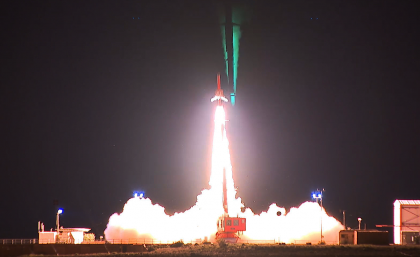The free-flying hypersonic glider ‘Hyshot V’, designed to fly at Mach 8 (8000 km/hr). Credit: University of Queensland
Commercialised flight faster than five times the speed of sound has been brought one step closer, thanks to a successful experimental flight featuring University of Queensland knowhow.
Aerospace engineering researchers from UQ, along with industry and government partners, completed the test flight at Woomera in South Australia.
UQ Chair of Hypersonic Propulsion Professor Michael Smart said the triumph advanced the realisation of hypersonic flight in Australia's commercial and defence sectors.
"Hypersonic flight has the potential to revolutionise air travel, making it faster and cheaper to travel around the world and into space," said Professor Smart.
"The experimental flight, designated as 'HIFiRE 4', was part of the HIFiRE Program conducted by the Defence Science and Technology (DST) Group and US Air Force Research Laboratory (AFRL), partnering with UQ, Boeing, and BAE Systems."
Woomera was selected as the test site because of its location, vast area, and ability to support continuous data collection during the flight.
The data collected during the experiment will help researchers to better understand controlled flight at hypersonic speed.
"Fundamental research conducted over many years by UQ's Centre for Hypersonics, within the School of Mechanical and Mining Engineering, has made a significant contribution to this and previous HIFiRE flights," Professor Smart said.
Credit: University of Queensland
UQ's support of HIFiRE was partially funded by Boeing and the Queensland State Government through the National and International Research Alliances Program.
Minister for Defence, Senator Marise Payne, said by understanding hypersonic flight, the Australian Defence Force would be in a better position to respond to future threats.
Minister Payne said the HIFiRE team had achieved significant milestones, including design, assembly and pre-flight testing of the hypersonic vehicles, and design of complex avionics and flight systems.
Provided by University of Queensland























